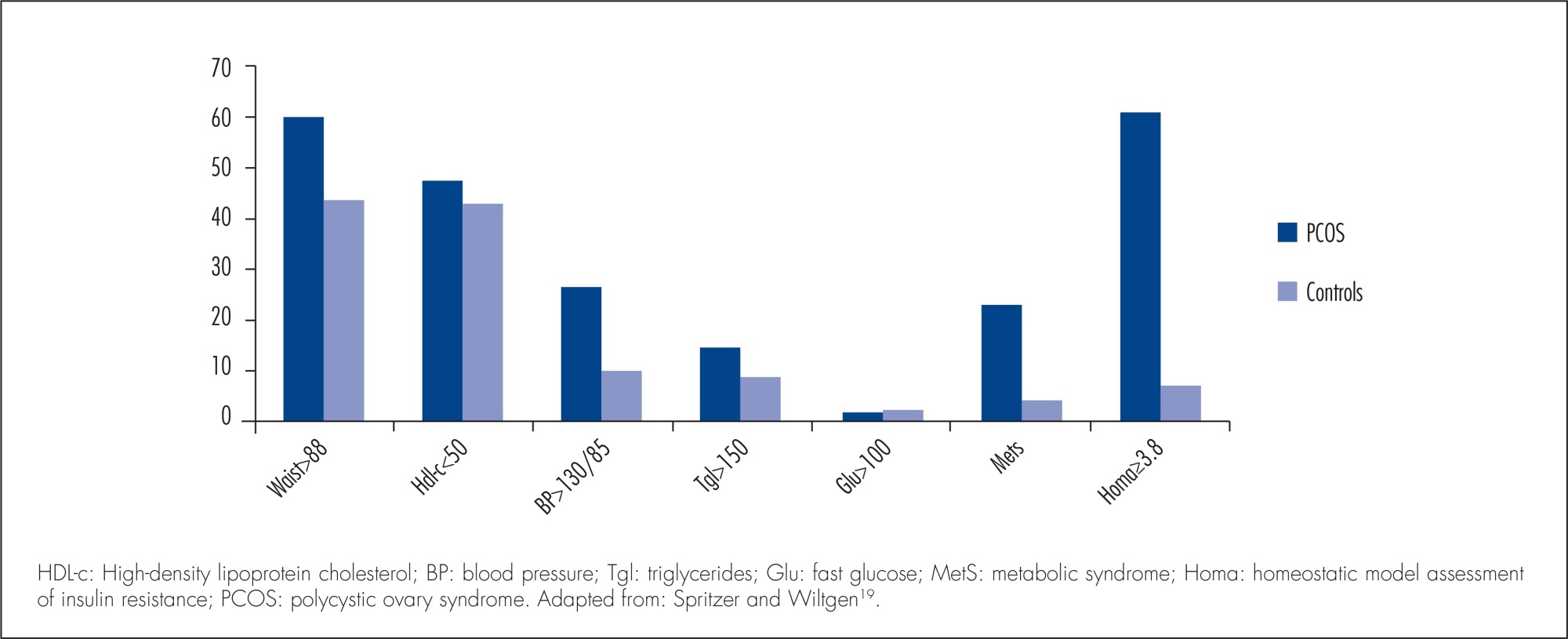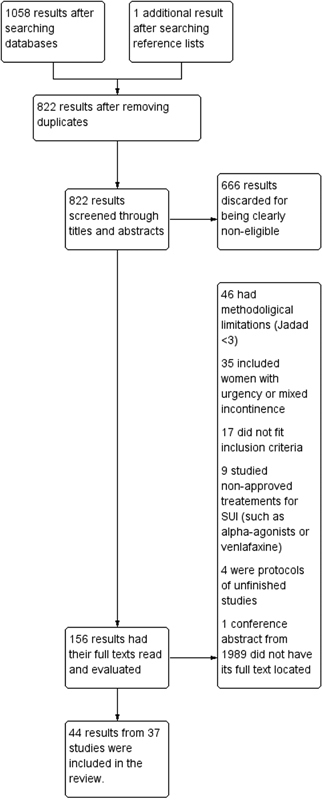-
Original Article05-02-1998
Timing and frequency of prenatal visits: impact on the preterm delivery
Revista Brasileira de Ginecologia e Obstetrícia. 1998;20(1):25-32
Abstract
Original ArticleTiming and frequency of prenatal visits: impact on the preterm delivery
Revista Brasileira de Ginecologia e Obstetrícia. 1998;20(1):25-32
DOI 10.1590/S0100-72031998000100005
Views106See moreIt is universally accepted that prenatal care has a beneficial impact on perinatal outcome. However, it is unclear whether access to early and frequent prenatal care influences the impact of pregnancy complications on birth weight. The objective of the present study was to determine the effectiveness of prenatal care, concerning antenatal visits (number and time of the first one), on gestational age and fetal weight at birth. We assessed prospectively the effect of the antenatal care in a group of 648 infants born consecutively at the University Hospital of Santa Maria, weighing from <1000 to >4000 g, and from <28 to >40 weeks of gestational age. Preterm delivery (<37 weeks) accounted for 17.7% of all deliveries, low birth-weight infants (<2500 g) for 20.5%, and very low birth-weight infants (<1000 g) for 2.8%. When the first antenatal visit was performed before the 12th week, only 5.1% of the babies were born with <37 weeks of gestational age or weight at birth of <2500 g. However, when the first visit was after the 28th week, the percentage of preterm delivery was 41.3% and of birth weight <2500 g was 43.5%. A significant association between higher frequency of antenatal visits, early care and decrease in preterm delivery frequency and low birth-weight infants was noted (p <0.001). We conclude that increase in the number of antenatal visits and early care can reduce the preterm delivery and low-birth weight infant rates.
-
Original Article05-02-1998
Effect of insulin therapy in on pregnancy of diabetic rats: fetal and placental repercussions
Revista Brasileira de Ginecologia e Obstetrícia. 1998;20(1):19-24
Abstract
Original ArticleEffect of insulin therapy in on pregnancy of diabetic rats: fetal and placental repercussions
Revista Brasileira de Ginecologia e Obstetrícia. 1998;20(1):19-24
DOI 10.1590/S0100-72031998000100004
Views111See moreFetal and placental effects of insulin therapy on pregnancy of diabetic rats were studied. Alloxan was administered intravenously at the dose of 42 mg/kg of body weight. Five experimental groups were formed: control (G1, n=12), non-treated rats with moderate diabetes (G2, n=10), insulin-treated rats with moderate diabetes (G3, n=11),non-treated rats with severe diabetes (G4, n=12) and insulin-treated rats with severe diabetes (G5, n=10). Six hundred and thirty-four newborn rats and placentas wereprocured. The perinatal result of insulin therapy was directly related to the quality of glycemia control. Thus, inadequate control of moderate diabetes produced levels of moderate hyperglycemia, did not interfere with the newborn rats’ body weight and decreased the proportion of LGA newborn rats. Adequate control of severe diabetes brought the newborn rat glycemia to normal levels, increased the newborn rats’ body weight and decreased the proportion of SGA newborn rats. Adequate insulin therapy for severe diabetes diminished the weight of the placentas, but did not change the placental index.
-
Original Article05-02-1998
Maternal mortality in São Paulo City from 1993 to 1995
Revista Brasileira de Ginecologia e Obstetrícia. 1998;20(1):13-18
Abstract
Original ArticleMaternal mortality in São Paulo City from 1993 to 1995
Revista Brasileira de Ginecologia e Obstetrícia. 1998;20(1):13-18
DOI 10.1590/S0100-72031998000100003
Views94See moreThe parpose of the present report was to determine the maternal mortality rate in São Paulo, the most frequent pathologies which caused death and the distribution of cases paccording to age. In thepresent retrospective study 179,872 death certificates from April 1993 to December 1995 of women from 10 to 49 years old. Were reviewed 761 death certificates were selected, in which the pregnancy state was either declared or presumed; pregnancy was confirmed in 291/761 cases and 53/761 cases are still under investigation. The data were tabulated, grouped and analyzed considering the age and cause of death, according to the 9th revised edition of ICD – International Classification of Diseases. Of the 291 positive cases, 82 (28.17%) did not show any reference to the pregnancy state in the death certificate (undernotification); 183/291 cases (62.89%) were direct maternal deaths and the main diseases leading to maternal death were: hemorrhage (47/183), preeclampsia-eclampsia (46/183) and abortion complications (43/183). Among the indirectly related causes of maternal death (79/291), cardiopaty was the most frequent (33/79). Hypertensive syndrome (preeclampsia-eclampsia and/or chronic arterial hypertension) were responsible for 58/291 cases (19.93%) of maternal deaths. This study allowed us to calculate the maternal mortality rate for São Paulo: 50.24:100,000 live births.
PlumX Metrics
- Citations
- Citation Indexes: 3
- Usage
- Full Text Views: 9522
- Abstract Views: 714
- Captures
- Readers: 11
-
Original Article05-02-1998
Maternal mortality in Recife: causes of maternal deaths
Revista Brasileira de Ginecologia e Obstetrícia. 1998;20(1):7-11
Abstract
Original ArticleMaternal mortality in Recife: causes of maternal deaths
Revista Brasileira de Ginecologia e Obstetrícia. 1998;20(1):7-11
DOI 10.1590/S0100-72031998000100002
Views111See moreWith the purpose of identifying the causes of maternal deaths, this study evaluated all cases of deaths of 10 to 49-years-old women which occurred in Recife, Pernambuco, Brazil, during 1992 and 1993. The data were obtained from 1013 death certificates and were complemented by medical and anesthetia records forms, nursing reports, necropsies and also interviews with physicians who took care of the women, or with their relatives. The main basic causes of maternal deaths identified were arterial hypertension (23.8%), infections (19.0%), abortion (11.9%), hemorrhage (9.5%), pulmonary embolism (4.8%) and anaesthetic accident (2.4%). About 70% of maternal deaths in Recife in the studied period were due to directo obstetrical causes.
PlumX Metrics
- Citations
- Citation Indexes: 12
- Usage
- Full Text Views: 24793
- Abstract Views: 1148
- Captures
- Readers: 14
-
05-02-1998Revista Brasileira de Ginecologia e Obstetrícia. 1998;20(1):6-6
Abstract
Revista Brasileira de Ginecologia e Obstetrícia. 1998;20(1):6-6
DOI 10.1590/S0100-72031998000100001
Views37Editorial A Revista Brasileira de Ginecologia e Obstetrícia – RBGO constitui o nosso meio de divulgação de trabalhos originais e de pesquisa. Para a atual Diretoria da FEBRASGO, criar, elaborar e editar um periódico desse quilate requer dedicação, além de profundos e abrangentes conhecimentos técnicos e científicos. E, sobretudo, acreditar naquilo que faz. É necessário, […]See more -
04-16-1998
Síndrome dos ovários policísticos: relação entre os aspectos clínicos, hormonais e ultra-sonográficos
Revista Brasileira de Ginecologia e Obstetrícia. 1998;20(2):118-118
Abstract
Síndrome dos ovários policísticos: relação entre os aspectos clínicos, hormonais e ultra-sonográficos
Revista Brasileira de Ginecologia e Obstetrícia. 1998;20(2):118-118
DOI 10.1590/S0100-72031998000200012
Views120Síndrome dos Ovários Policísticos: Relação Entre os Aspectos Clínicos, Hormonais e Ultra-Sonográficos […]See more -
04-16-1998
Diagnóstico diferencial de massas anexiais císticas: avaliação de métodos pré e pós-intervenção
Revista Brasileira de Ginecologia e Obstetrícia. 1998;20(2):118-118
Abstract
Diagnóstico diferencial de massas anexiais císticas: avaliação de métodos pré e pós-intervenção
Revista Brasileira de Ginecologia e Obstetrícia. 1998;20(2):118-118
DOI 10.1590/S0100-72031998000200011
Views78Diagnóstico Diferencial de Massas Anexiais Císticas: Avaliação de Métodos Pré e Pós-Intervenção[…]See more -
Case Report04-16-1998
Sclerosing granular cell tumor of the breast simulating fibromatosis
Revista Brasileira de Ginecologia e Obstetrícia. 1998;20(2):114-117
Abstract
Case ReportSclerosing granular cell tumor of the breast simulating fibromatosis
Revista Brasileira de Ginecologia e Obstetrícia. 1998;20(2):114-117
DOI 10.1590/S0100-72031998000200010
Views138See moreWe describe a sclerosing granular cell tumor of the breast simulating fibromatosis. Clinically it simulates carcinoma because of its fibrous consistency and fixation to the greater pectoral muscle. The mammograms showed a rounded density with a slightly irregular margin in the upper, inner and outer quadrant of the left breast. Ultrasound showed a poorly defined solid lesion disrupting fascial planes. Clinical, radiological histological and therapeutica aspects are discussed.
Search
Search in:
Tag Cloud
Pregnancy (252)Breast neoplasms (104)Pregnancy complications (104)Risk factors (103)Menopause (88)Ultrasonography (83)Cesarean section (78)Prenatal care (71)Endometriosis (70)Obesity (61)Infertility (57)Quality of life (55)prenatal diagnosis (51)Women's health (48)Maternal mortality (46)Postpartum period (46)Pregnant women (45)Breast (44)Prevalence (43)Uterine cervical neoplasms (43)







